Catching Big Bass in Small Ponds
Catching Big Bass in Small Ponds
I’ve been a quiet fan of Catching Big Bass in Small Ponds for a very long time. It’s something that I haven’t talked to too many people about because I kind of like keeping it a secret 🙂
Over the last 35 years I have fished many small bodies of water that held good populations of big bass, and these waters were relatively un-fished by knowledgeable bass anglers.
Why are they so lightly fished?
Because most of them had no access for standard bass boats on large trailers. Some did have small ramps, but not anything able to handle a 17-20 ft. bass boat. Many of them can’t even handle a trailer at all.
So, for those willing to fish from small boats, canoes or kayaks, small ponds can be a big treat!
All Small Ponds Aren’t Created Equal

This particular small pond has an abundance of small bass. Something important is missing that keeps the bass smaller than average.
Not all small ponds have big bass in them. It takes the right combination of factors for a small pond to be able to grow big bass.
There is a delicate balance of bass, forage, cover and other conditions that have to be just right in order for the bass to thrive and grow large.
I’ve found that it isn’t the type of forage that matters as much as the abundance of it that plays a key role in allowing bass to reach their full potential in a small pond.
I’m not a marine biologist, but I’ve been bass fishing long enough to have learned a few things about healthy bass and healthy habitats.
Small ponds with bigger forage, such as bluegills, crawdads, frogs, etc, can grow big bass. But small ponds with an abundance of very small baitfish, even those ponds lacking bluegills, frogs and crawdads, can also grow big bass. The key is that those tiny baitfish be super-abundant. This will give the bass sufficient food to grow big and stay healthy.
Tackle and Techniques for Catching Big Bass in Small Ponds
Becoming proficient at catching Big Bass in Small Ponds can sometimes require that we change things up a bit when it comes to techniques, presentations and lures.
Don’t get me wrong, sometimes we can use all of our “normal” stuff and catch bass with little effort.
But some ponds are just unique, and the bass that live in them are as unique as the pond itself. Here are some examples from some of my own small-pond-big-bass experiences.
I have fished several ponds that are under 50 acres, with some well under that size, that fish a lot like bigger bodies of water. I can use the same big baits, heavy line and techniques that I use on larger lakes, and I can catch truly big bass doing that.
My personal best New England Largemouth Bass came from a small (public) pond that is well under the 50 acre size. And it has easy public access for shore anglers and small boats, canoes, kayaks, etc. The 9 lb. 2 oz. giant that I landed there many years ago was caught after dark on a big Musky Jitterbug. And that very same year, I know that there were other bass over 5 lbs. caught from there as well, all on standard bass lures.
Another small (public) pond that has no boat ramp, but does have public access for carry-ins, also yielded many bass up to 6 lbs. for me using typical night fishing tactics during several visits there in a small Coleman Crawdad that I used to own. Spinnerbaits and various big topwater baits yielded better-than-average catches there.
Thinking Outside The Box

One pond that comes to mind is quite small; less than 10 acres.
When I first started fishing it, I used only standard bass fishing tackle. My results were hit or miss. I would catch bass there in one out of every 4 or 5 trips using spinnerbaits, Beaver style baits, Senko style baits and a few other lures that I would typically use while fishing bigger lakes from my boat.
I caught some bass doing that, and some of them were pretty nice. But the hit or miss scenario drove me nuts. I knew the bass were there, but not knowing how to catch them consistently bothered me.
So, I did my best to figure out why it was happening. If I could figure out the why, I could probably figure out the how of enticing these bass to bite more consistently.
Paying Attention to Details Pays Big Dividends
While making the many trips that I made to this one pond, and another one nearby, I noticed a common thread. They were loaded with tiny baitfish; hundreds of thousands of them.
Seeing this over and over again got me thinking about what those bass primarily feed on.
Note the word, “primarily”.
It was surely not crawdads, bluegills or frogs, even though those were likely present.
Observing the abundance of the tiny baitfish convinced me that the bass were likely feeding on those more than anything else. So I needed to offer them something that matched that.
This would mean scaling back, not only on the lures I used, but also on the tackle I used to present those baits to the bass.
The Secrets?
Now, as much as I know many readers would like it if I gave detailed information as to exactly what I figured out would catch these fish, I am choosing not to do that. And here’s why.
First, because every pond is unique, what I did won’t necessarily work for you in the exact same way that it worked for me.
Second, it’s more beneficial if we can figure some of these things out ourselves because it helps make us better anglers, not just copycats.
So, instead of listing exactly what I figured out, I will give you generalities that will point you in the right direction.
Guidelines
In light of that, here are some guidelines to use that will help you narrow things down a bit in your own local small ponds.
Use these only as guidelines, not as a hard list of exactly what to do or throw.
Think Smaller

Use baits that closely mimic the forage in that pond.
For tiny baitfish, choose baits that are 2-4 inches in length.
Small plastic worms, like the old-school Slider Worm, can be a killer bait that will catch small and big bass alike. Despite their tiny profile, I have landed bass on these up to 6 lbs., and they have helped me win a lot of tournaments over the last 30 years.
Grubs, like the Kalin’s Lunker Grub, are an often-overlooked lure that will catch some really big bass. Try to match the grub color to something close to the baitfish in the pond you’re fishing.
Another favorite is the smaller swimbaits, especially those in the 3 – 3.8 inch range. The Keitech baits are an excellent option.
If you’re looking for a small hard bait, consider the all-time favorite, Rapala floating original minnow, in the smaller sizes. The 2 inch minnow has treated me very well over the years on bigger lakes and small ponds.
Remember, you’re goal is to imitate the smaller baitfish in the pond.
Small Details Make a Big Difference
Sometimes the smallest details can mean the difference between catching bass and leaving empty-handed.
I had an experience recently where I was catching bass like crazy on a specific soft plastic bait. Then, to my horror, I ran out of that bait before an order for new ones arrived 🙁
I searched through my tackle to find something similar, and I found one, yes just one bait, that was similar. It was not an exact match, but I figured it would work.
Wrong!
I found that because it wasn’t the exact same bait in size and density, it behaved completely different. It sank faster than the normal baits, and it didn’t have the same action as my regulars. And that cost me big time, with zero bites when the regular baits were catching multiple bass per trip.
Lesson learned; don’t run out of proven baits! I ordered 1,000 of the proven baits. I don’t think I’ll run out again 😀
And that showed me how important the littlest details can be.
That bait, rigged exactly the same as the usual bait, sank faster, so it spent more time dragging on the bottom when I really wanted it to stay off the bottom on the retrieve.
So, if you find something that works, don’t expect something “almost the same” to work as well. It may, or it just may not.
A Little More About the Tackle Needed

I actually scale back to light action or ultra-light action spinning rods spooled with 4-6 lb. test line in some situations. And it works wonders.
Yes, it can be a bit hairy sometimes trying to land a bigger bass on light line and wimpy rods, but if it’s what it takes to get bites, then I will do it.
Summing it Up

Others don’t want to leave the comfort of their bass boat and fish from small boats, canoes or kayaks. And some just don’t want to be bound to fishing from shore.
Catching big bass from small ponds has its difficulties. I won’t lie about that. And it’s not as glamorous as fishing from a full-equipped bass boat with all of its bells and whistles. You aren’t as comfortable and you won’t have your full arsenal of tackle at your fingertips
But the fruits of those labors and putting up with the discomforts can far outweigh the extra work required.
Give it a try and don’t give up if some ponds don’t produce big catches. Perseverance and diligence go a long way toward being successful at catching big bass in small ponds!

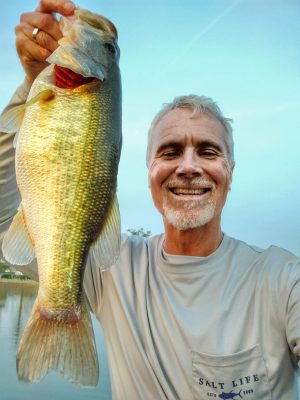
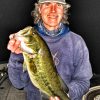
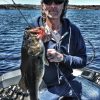
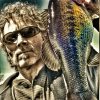
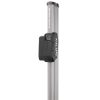

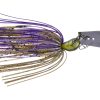

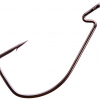
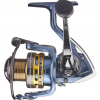
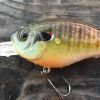
There are no comments yet, add one below.